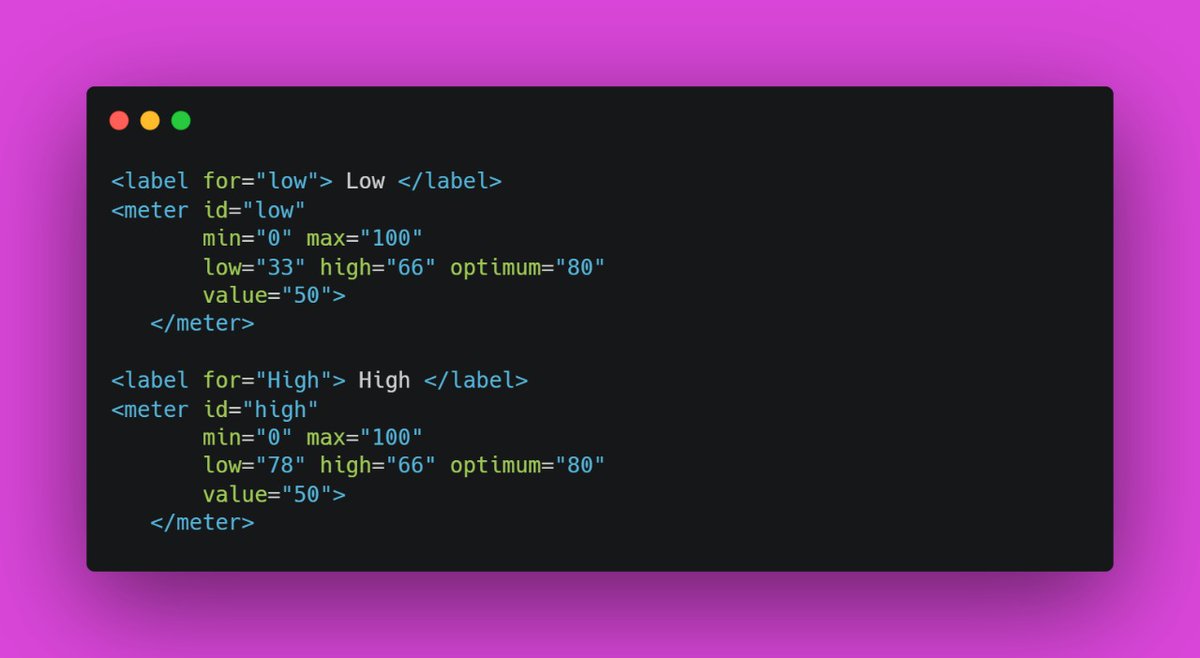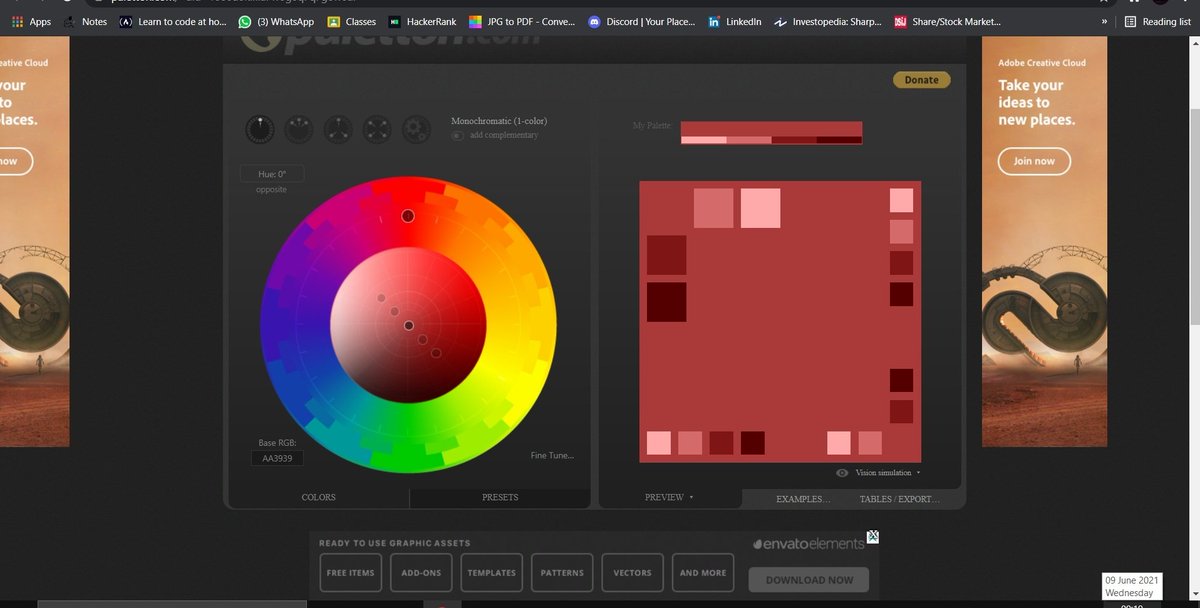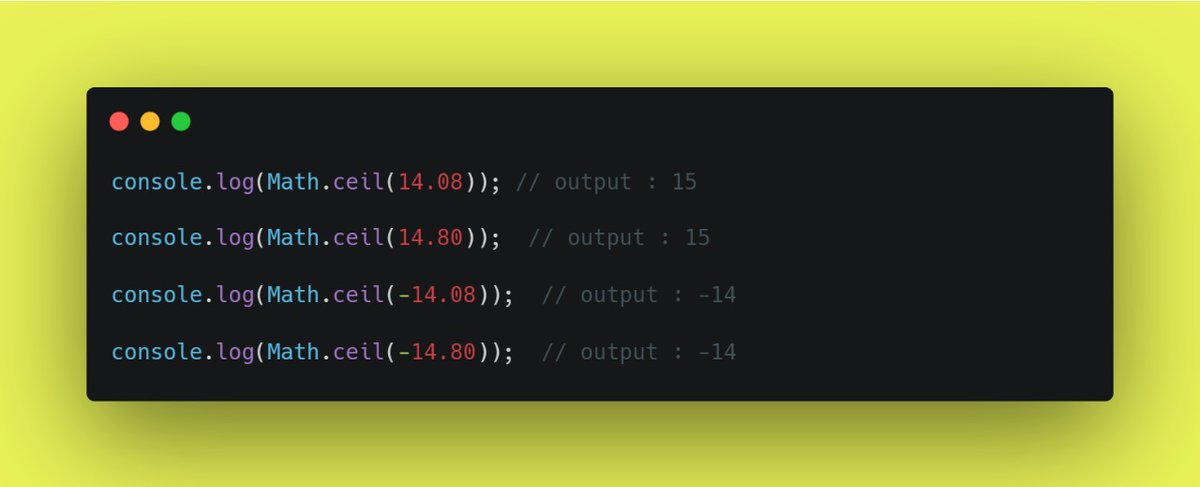
Powerful HTML Features you may not know
A thread 🧵👇
A thread 🧵👇
➡️ The Meter Tag : The <meter> tag defines a scalar measurement within a known range, or a fractional value. This is also known as a gauge. 

➡️ The Attribute Required : The required attribute which, if present, indicates that the user must specify a value for the input before the owning form can be submitted 

➡️Drag and Drop: It is a powerful user interface concept which is used to copy, reorder and delete items with the help of mouse. You can hold the mouse button down over an element and drag it to another location.If you want to drop the element there, just release the mouse button 

➡️ Defer and async attributes :The defer attribute specifies that the script is executed when the page has finished parsing.The defer attribute is only for external scripts.
The async attribute is used to indicate to the browser that the script file can be executed asynchronously

The async attribute is used to indicate to the browser that the script file can be executed asynchronously


• • •
Missing some Tweet in this thread? You can try to
force a refresh











